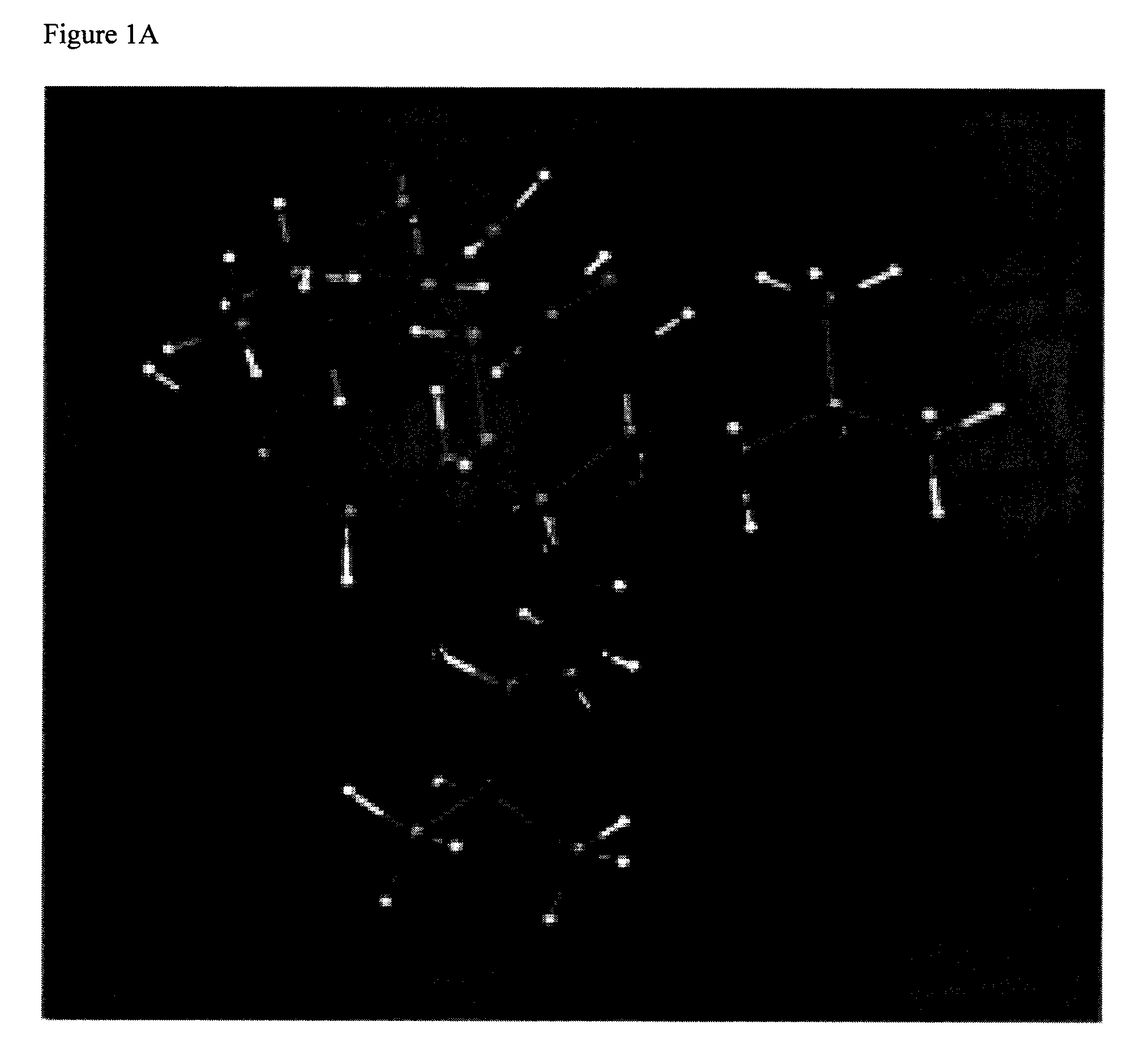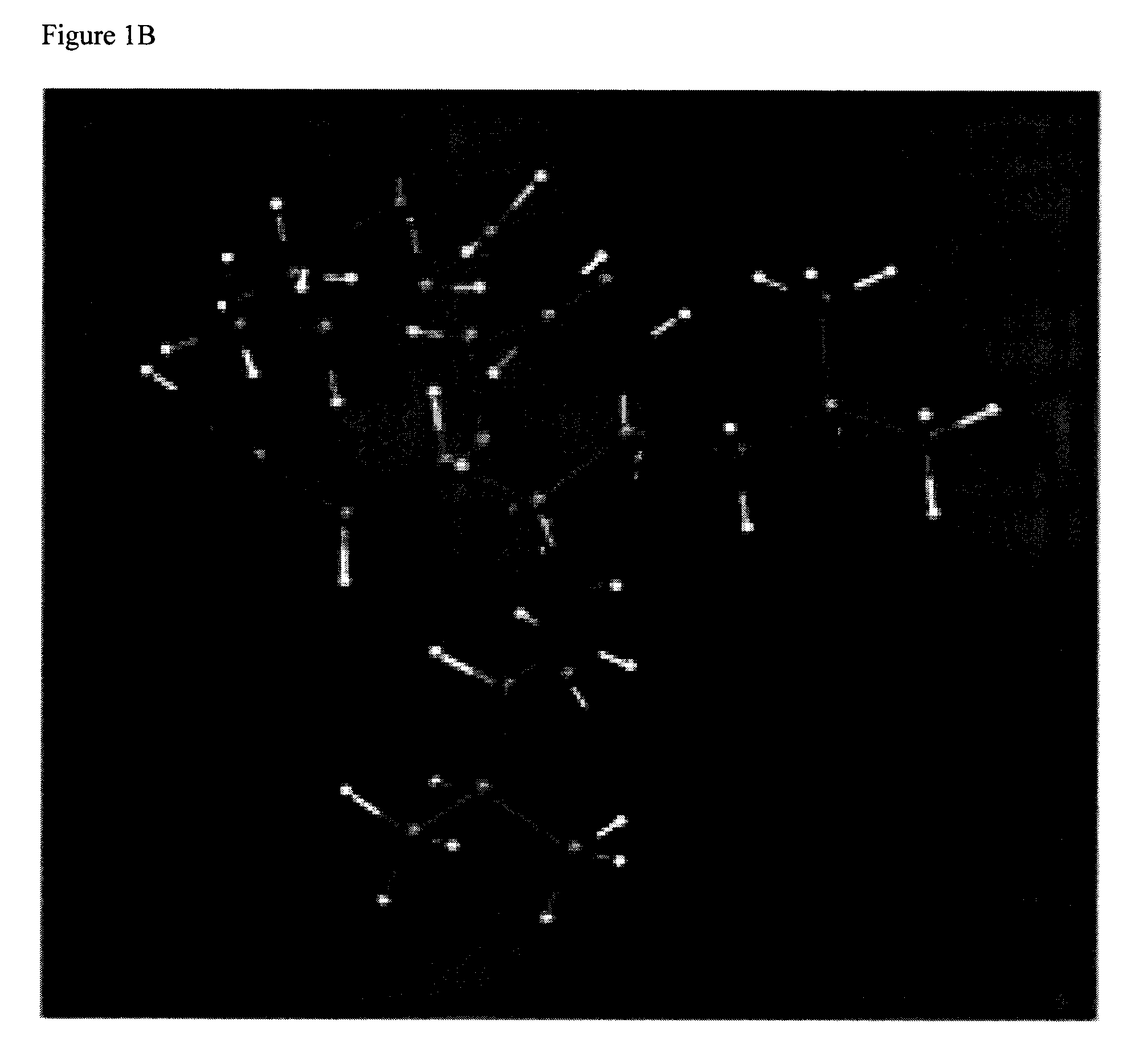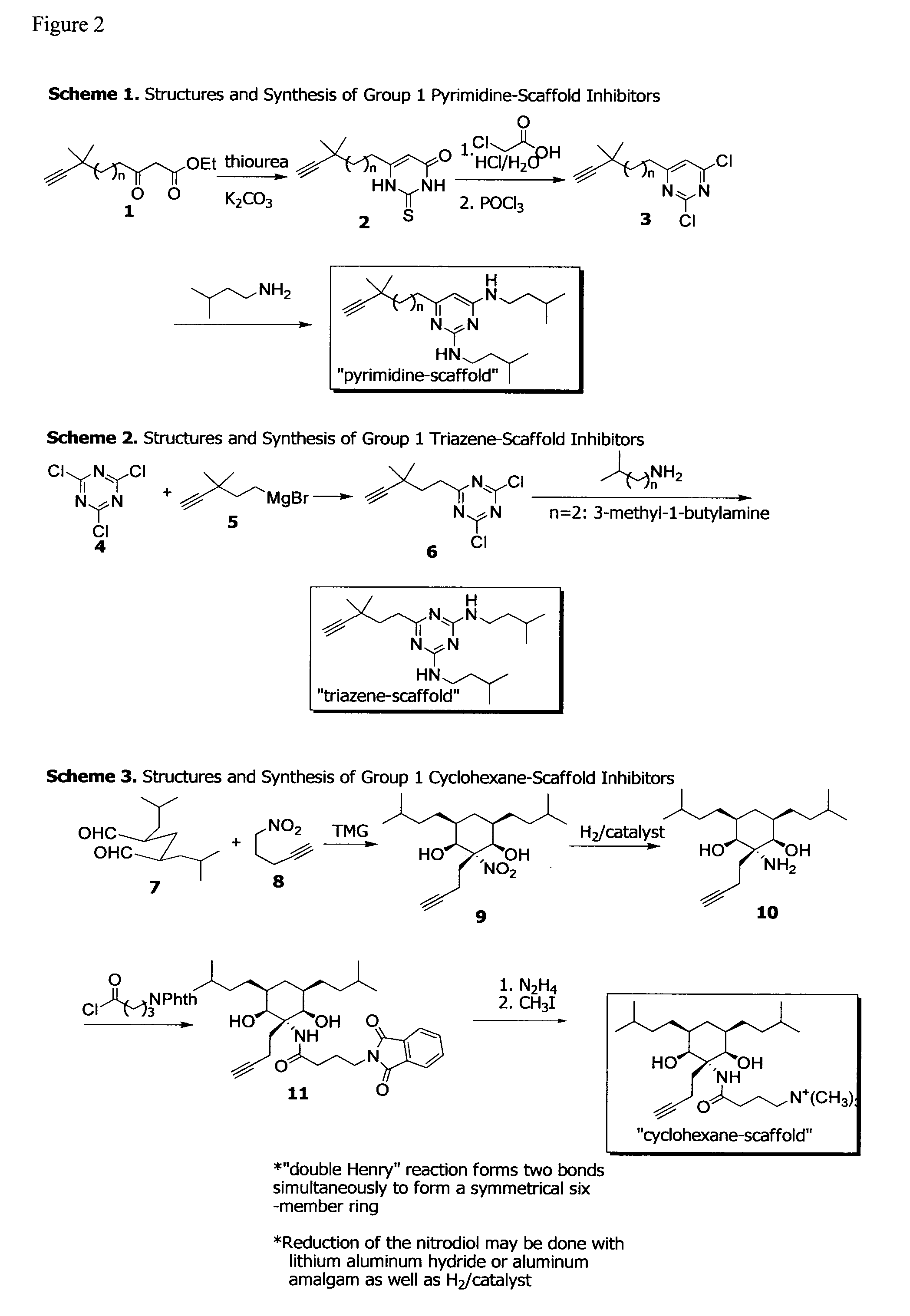Anti-biofilm compounds
a technology of biofilms and compounds, applied in the field of antibiofilm compounds, can solve the problem of no pathogen specific treatment available for oral diseases, and achieve the effect of convenient and non-invasive administration
- Summary
- Abstract
- Description
- Claims
- Application Information
AI Technical Summary
Benefits of technology
Problems solved by technology
Method used
Image
Examples
example 1
Design and Synthesis of Anti-biofilm Peptidomimetic Compounds
[0137]Caries and periodontitis are likely the most prevalent and costly microbial diseases in humans and are caused by complex multi-species biofilms. In the last several decades, the composition of these biofilms, the pathogenic organisms associated with disease, and how these communities develop and initiate the disease processes have been extensively studied. As a result, understanding of these microbial infections at the molecular and mechanistic levels has dramatically progressed. Yet both caries and periodontitis are still highly prevalent and the treatment and prevention approaches that currently exist consist primarily of removing the entire microbial biofilm rather than targeting specific pathogens without affecting the commensal organisms or other species that may be beneficial to health.
[0138]The present example uses the mechanistic and molecular information derived from the inventors' studies of the microbial p...
example 2
Preparation of Compound 25
[0165]
[0166]2-Oxo-1,2-diphenylethyl acetate (24): Benzoin 23 (2.0 g, 9.40 mmol) was dissolved in acetic anhydride (15 mL, 158.70 mmol) followed by the addition of two drops of sulfuric acid which resulted in a pale yellow color. The reaction mixture was then stirred under a nitrogen atmosphere at room temperature (72 h) while monitoring its progress by TLC. The reaction mixture was then dissolved in water and extracted with dichloromethane (3×40 mL). The dichloromethane layer was then dried over anhydrous sodium sulfate. After removal of the drying agent by filtration and removal of the solvent by rotary evaporation, the product was found to be of acceptable purity as evidenced by 1H NMR and TLC, Rf: 0.2 (hexane / ethyl acetate, 2:1): mp 83-85° C. (Lit. 85-87° C.).
[0167]
[0168]2-Methyl-4,5-diphenyloxazole (25): 2-Oxo-1,2-diphenylethyl acetate 24 (0.20 g, 0.79 mmol) was dissolved in DMF (10 mL). Thiourea was then added and the reaction was refluxed (160° C., oi...
example 3
Preparation of Compounds 27a, 27b and 27c
[0169]
[0170]General procedure for the preparation of benzoin esters (26a, 26b, 26c): Benzoin (1 eq) was dissolved in pyridine (10 mL) followed by cooling the solution to 0° C. (ice water bath). The aroyl chloride (1 eq, benzoyl chloride, 4-bromobenzoyl chloride, 4-nitrobenzoyl chloride) was then added dropwise to the stirred solution while cooling. The reaction flask was then capped, and after stirring 30 minutes, the cooling bath was removed. The reaction mixture was stirred (18 h) while monitoring by TLC. After the starting materials were consumed, the reaction mixture was dissolved in dichloromethane (150 mL) and washed with 5% aqueous HCl (5×100 mL). The organic layer was then separated and dried over anhydrous sodium sulfate. Flash chromatography on silica gel (hexane / ethyl acetate, 9:1) afforded esters 26a, 26b and 26c as crystalline solids in 87%, 32% and 45% yield respectively. 2-oxo-1,2-diphenylethyl benzoate (26a): m.p. 123-126° C. ...
PUM
| Property | Measurement | Unit |
|---|---|---|
| thick | aaaaa | aaaaa |
| thick | aaaaa | aaaaa |
| depths | aaaaa | aaaaa |
Abstract
Description
Claims
Application Information
 Login to View More
Login to View More - R&D
- Intellectual Property
- Life Sciences
- Materials
- Tech Scout
- Unparalleled Data Quality
- Higher Quality Content
- 60% Fewer Hallucinations
Browse by: Latest US Patents, China's latest patents, Technical Efficacy Thesaurus, Application Domain, Technology Topic, Popular Technical Reports.
© 2025 PatSnap. All rights reserved.Legal|Privacy policy|Modern Slavery Act Transparency Statement|Sitemap|About US| Contact US: help@patsnap.com



